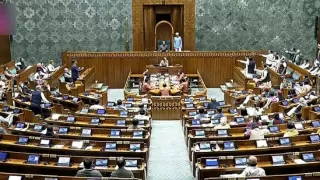India’s labour framework has undergone a historic transformation as the government brings four long-awaited labour codes into effect. These codes aim to simplify the country’s complex web of labour regulations and bring long-overdue reforms that reflect modern workplace needs. With several older laws dating back to the colonial era, the overhaul is positioned as a major step toward ensuring greater clarity, uniformity and protection for millions of workers across diverse sectors.
The new codes consolidate and replace 29 different labour laws, making compliance easier for employers while strengthening fundamental rights and benefits for workers. From universal minimum wages to expanded social security, from clear definitions of wages to flexible working hours, the new framework attempts to strike a balance between workers’ welfare and business efficiency. The rollout marks a significant turning point in India’s employment landscape.
These reforms also address rising forms of employment, especially gig and platform work, which now form a sizeable portion of the urban workforce. By formally including such workers under social security, the new labour regime recognises the evolving nature of work in the digital economy. The changes have been welcomed by many, but have also sparked criticism from trade unions who argue that several provisions favour employers. Below is a detailed breakdown of the major elements of the new labour codes.
Overview of the Four New Labour Codes
The government has introduced four consolidated labour codes to replace outdated regulations and streamline India’s labour framework. These include the Code on Wages (2019), Industrial Relations Code (2020), Code on Social Security (2020), and the Occupational Safety, Health and Working Conditions (OSHWC) Code (2020). Together, they bring uniformity to key aspects such as wages, social protection, working hours and industrial relations.
The objective behind merging older laws into four comprehensive codes is to reduce complexity, ensure better enforcement and make it easier for both employers and workers to navigate labour rules. By removing inconsistencies in previous acts and updating provisions to suit contemporary needs, the codes aim to create a more predictable and transparent system.
The introduction of these codes also aligns with India’s economic reforms aimed at improving ease of doing business. They redefine employer obligations, streamline licencing processes, and set clearer standards for workplace safety and dispute resolution. However, questions remain about the extent to which these changes will affect workers’ rights, especially in smaller industries.
Gig and Platform Workers Gain Social Security
One of the most significant elements of the new labour codes is the inclusion of gig and platform workers under social security provisions. With the gig workforce estimated to surpass 23 million by 2030, the government has recognised the urgent need to safeguard workers who were previously excluded from formal benefits.
Under the new framework, food delivery personnel, ride-hailing drivers, logistics partners, and other platform-based workers will be eligible for benefits such as provident fund contributions, insurance coverage, and access to welfare schemes. For the first time, minimum wage protections and timely payment requirements will also extend to them.
Additionally, companies employing gig and platform workers are required to allocate up to two percent of their annual turnover to dedicated funds for worker welfare. This provision marks a shift toward acknowledging the economic contribution of the gig sector and ensuring that workers receive structured, long-term support.
Expanded Opportunities for Women in Night Shifts
The new labour codes bring significant changes for women workers by allowing them to work night shifts across all sectors, including traditionally restricted industries such as mining and heavy machinery. This provision is expected to open more opportunities and promote gender equality in the workforce.
Employers are required to ensure necessary safety measures, secure transportation, and the worker’s written consent before assigning night shifts. These safeguards are designed to encourage women’s participation without compromising their safety or well-being.
The codes also reinforce equal pay for equal work and extend maternity benefits, including 26 weeks of paid leave, to women in unorganised sectors. This strengthens the social security net and aligns India’s labour practices with global standards.
Revised Rules on Wages and Gratuity
The new definition of wages under the labour codes brings consistency to how gratuity, pensions and social security contributions are calculated. Basic pay, dearness allowance and retaining allowance together form the core wage, while exemptions are capped at 50 percent of total remuneration.
This eliminates the ambiguity that employers previously utilised to keep wage components artificially low. As a result, employees will see more predictable benefits and improved long-term financial security.
Another major reform is the reduction of eligibility for gratuity for fixed-term employees from five years to one year. This is particularly beneficial for workers in contract-based roles, who form a growing segment of the workforce.
Working Hours and Overtime Regulations
The labour codes cap daily working hours at eight, while the weekly limit remains 48 hours. Overtime is allowed only with the worker’s consent and must be compensated at twice the regular wage rate. These provisions aim to ensure fair pay while maintaining adequate rest periods.
However, some experts have expressed concerns that the unchanged weekly limit may enable 12-hour shifts, which could strain workers physically and mentally. Balancing flexibility with worker protection will be crucial as industries adopt these changes.
The codes also introduce provisions for flexible working arrangements, enabling companies to reorganise shift structures depending on business needs, subject to compliance with safety and welfare measures.
Universal Minimum Wage and Floor Wage
A major reform under the new labour regime is the introduction of a universal minimum wage applicable across all sectors, replacing the earlier system that covered only scheduled employment categories. This brings millions of unorganised workers under the protection of minimum wage laws for the first time.
A statutory national floor wage will be set by the central government, and states may determine higher minimum wages based on local conditions. However, they cannot set wages below the national floor, ensuring a basic income standard across the country.
This change aims to address income disparities, reduce exploitation and improve the standard of living for workers engaged in low-wage occupations across both rural and urban areas.
Easier Hiring and Firing Norms
The labour codes raise the threshold for government approval for layoffs from 100 to 299 employees. This means companies with up to 299 workers can hire and fire employees without prior permission, a provision intended to promote business flexibility and attract investment.
While industry bodies have welcomed this change, trade unions argue that it weakens job security and leaves workers vulnerable to sudden termination. The debate highlights the delicate balance between economic reform and protection of labour rights.
The codes also introduce streamlined mechanisms for dispute resolution, fast-tracking cases and reducing prolonged industrial conflict. This is expected to enhance workplace stability and productivity.
Trade Union Concerns and Criticism
Several trade unions have criticised the new labour codes, labelling them “anti-worker” and “pro-employer.” They argue that the reforms dilute long-standing labour protections, especially regarding job security and collective bargaining rights.
Union leaders claim that the ease of hiring and firing, along with flexible work-hour norms, could lead to exploitation if adequate oversight is not maintained. They have also raised concerns about the implementation timeline and the government’s consultation process.
The debate surrounding the labour codes underscores the complexity of balancing worker welfare with economic growth. While the new framework promises modernization and efficiency, its success will ultimately depend on transparent enforcement and continued dialogue between all stakeholders.
Also Read: Village Mourns Tejas Pilot Naman Syal After Dubai Crash






















